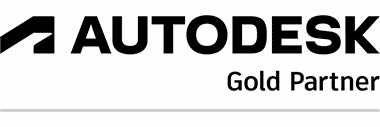The Autodesk 3ds Max 2020.3 Update is focused on increasing your efficiency, endurance, and precision. Building upon our recent 2020 Chamfer updates, this release brings you those enhancements directly in EditablePoly objects. New Viewport enhancements handle support for Arnold Lights, Arnold Alembic and Procedural objects. Improvements to the ATF importer include enhancements to Sketchup and JT formats for better visual and organizational precision.
Solutions in the 3ds Max 2020.3 Update
ATF Importer Update
Now supports all newer versions of SketchUp files.
- Added the ability to import JT 10.5 files
- Improved scene hierarchy for JT imports
- The ability to import CATIA V4 files that were created in CATIA V5-6R2019
- SketchUp importer enhancement with edge visibility
- SketchUp importer enhancement welding of imported geometry
 Scene from 3dwarehouse.sketchup.com user fitria N.
Scene from 3dwarehouse.sketchup.com user fitria N.
*Note: although no longer being developed, we will continue to support the legacy SketchUp importer for some period of time, to allow customers to transition their custom tools and pipelines to the new importer.
Chamfer and Modeling improvements
Chamfer enhancements made from 3ds Max 2020 through to the 3ds Max 2020.3 Update allow modelers to work more efficiently and to have the tools where they need them whether they’re in the modifier or EditablePoly objects.
- New Chamfer Mitering types (Radial and Patch) are available in EditablePoly caddies/dialogs
- We also updated chamfer algorithms to better handle edge cases, producing more pleasing geometry overall and avoiding degeneracies such as flattening or skewing of edges
- Transform Toolbox now uses world units
Viewport Enhancements
Time-saving and quality improvements with the existing viewport.
- Arnold lights are now supported in the viewport
- Arnold Alembic and Procedural now have viewport representation
- While in Active Shade, you can now change render settings without needing to restart Active Shade
 Scene courtesy of Turbosquid user CartoonFactory
Scene courtesy of Turbosquid user CartoonFactory
Arnold MAXtoA Update
This update delivers several improvements from Arnold 5.4.0.1 Core, the MAXtoA plugin, and Arnold GPU beta bringing even more speed, power, and flexibility to artist workflows.
MAXtoA 3.2.66 “in the box” – Newer version may be available, check the 3ds Max Arnold render dialog for upgrades
- Expose the clip_geo shader
- Expose the shader_override node for overriding all the scene’s shaders
- Expose the aov_read shaders
- Added the option to have no background
- Support for normal and height maps
- Bake elements transfer
 Image created by Lee Griggs using a scene by user shmud on flippednormals.com
Image created by Lee Griggs using a scene by user shmud on flippednormals.com
*Note: For more information, see the Arnold 3ds Max User Guide
Fit and Finish
Various additional updates have been made to smooth out workflows.
- PySide2 updated to 5.12.4 to match Qt version to resolve some instability
- Addressed issue preventing Python developers to access with consistent results Python APIs and properties imported into Maxscript.
- Physical Camera from previous version scenes no longer cause unpredictable behavior
- Bitmaps used in OSL Map were previously locked from saving in other editing applications
- UnwrapUVW
- Texture Selection fixed when changing material IDs
- Texture dropdown no longer loses all textures when reset
- Select All and Inverse no longer select hidden or frozen UVs
Forge Design Automation API for 3ds Max
On October 28th, 2019, the Forge Design Automation V3 API was made public. Design Automation can be used to automate mundane, repetitive, time-consuming and error-prone tasks, which means:
- Leveraging your existing 3ds Max scripts and plugins using the Design Automation API for 3ds Max
Batch in the cloud - Expert 3ds Max artists can focus on more meaningful work
- Less knowledgeable users can leverage the power of 3ds Max in the cloud via custom web tools
built on Forge - There is a reduced need for local hardware resources and licenses



